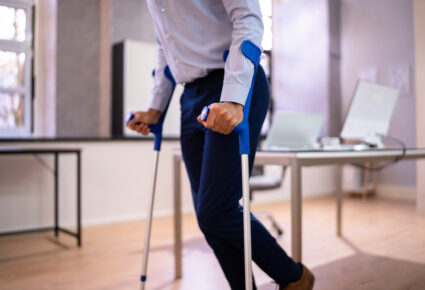I’ve been in workplace rehabilitation for over 20 years. As allied-health professionals we want to help our clients substantially improve their quality of life and functioning.
Workplace rehabilitation is an invaluable service playing a role in supporting workers in their recovery; enabling and educating employers to support recovery at work; and engaging with doctors and treatment providers to achieve meaningful functional goals.
The key to achieving an outcome that is consistent with the expected recovery timeframe is early intervention.
The Royal Australasian College of Physicians’ Health Benefits of Good Work position statement outlines the facts, and they are eye-opening. For example, if a person is off work after an injury:
- after just 20 days, the probability that they will ever return to work reduces to 70%
- at 45 days off work, that chance is reduced to just 50 per cent
- at 70 days it’s a mere 35 per cent.
It’s clear from these statistics that early referral for return to work intervention services is one of the most critical factors in supporting an injured worker in achieving a successful return to work outcome.
Often, we receive a referral long after the ideal early intervention window has slammed shut. While we still achieve results, it takes us longer, because of the entrenched barriers that have been built, which take time, and expertise, to remove.
The role we play in supporting workers in their recovery; enabling and educating employers to support recovery at work; engaging doctors and treatment providers to achieve meaningful goals; empowering workers to identify vocational goals and a new pathway where a return to the pre-injury work duties is not attainable and ensuring the objectives of workers compensation legislation, that include early, safe and sustainable return to work outcomes, remain the cornerstones of our service
A Case Study
Mr AM, 44, was referred to us 12 months after he started experiencing non-specific lower back pain, along with shoulder injury, both of which were impacting his work and home life.
As a father of three, with many commitments, Mr AM found himself avoiding exercise and unable to continue his normal activities.
The challenge
Mr AM was trapped in a downward spiral. He had become fear avoidant due to the pain of exercise, with reduced shoulder and lumbar flexion impacting his mobility. Demonstrated improvements from long-term physio treatment – and two cortisone injections for a shoulder rotator cuff tear – plateaued at the end of a 12-month period, then ceased.
With stress at home ramping up, Mr AM had developed a strong reliance on his therapist.
Our solution
We developed a recovery at work program which focussed not only on increasing Mr AM’s capacity at work, but also focussing on the psychosocial barriers which were impacting his recovery. This included pain education and some goal setting to help break the cycle. Fortunately, Mr AM responded to this in a positive way.
He found brief applied relaxation techniques particularly beneficial, providing a calming effect in times of home or work stress.
Relaxation practice was combined with a targeted schedule of exercise physiology. This graded exposure to exercise and movement boosted functioning as well as giving Mr AM valuable motivation to continue his program. By consolidating his gains, our client made a positive transition to a more active rehabilitation environment.
We employed a biopsychosocial approach customised to Mr AM’s needs. This holistic form of rehabilitation resulted in an excellent long-term sustainable outcome, where more traditional interventions had failed to make an impact.
The outcome
Mr AM finally resumed his support work in IT server installations. He gained maximum benefit from the pain education program:
- Returning to full-time work and a full duty roster after five months of targeted rehabilitation.
- Tolerating and performing his normal work duties without pain interference.
- Reporting a substantially improved quality of life and functioning.
Do you have employees who are not recovering as quickly as they would like? Find out more about our Return to Work programs following workplace injury.



